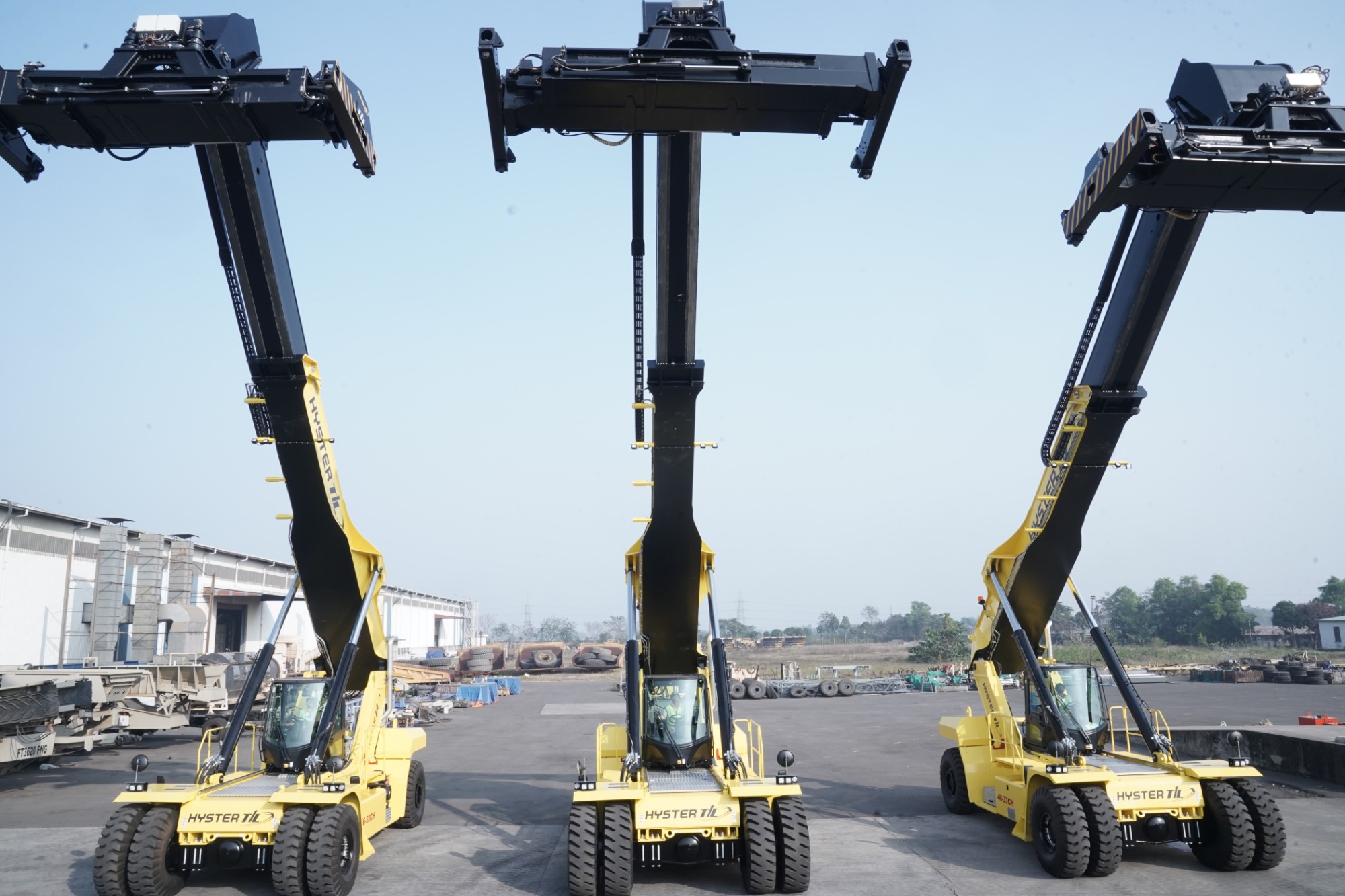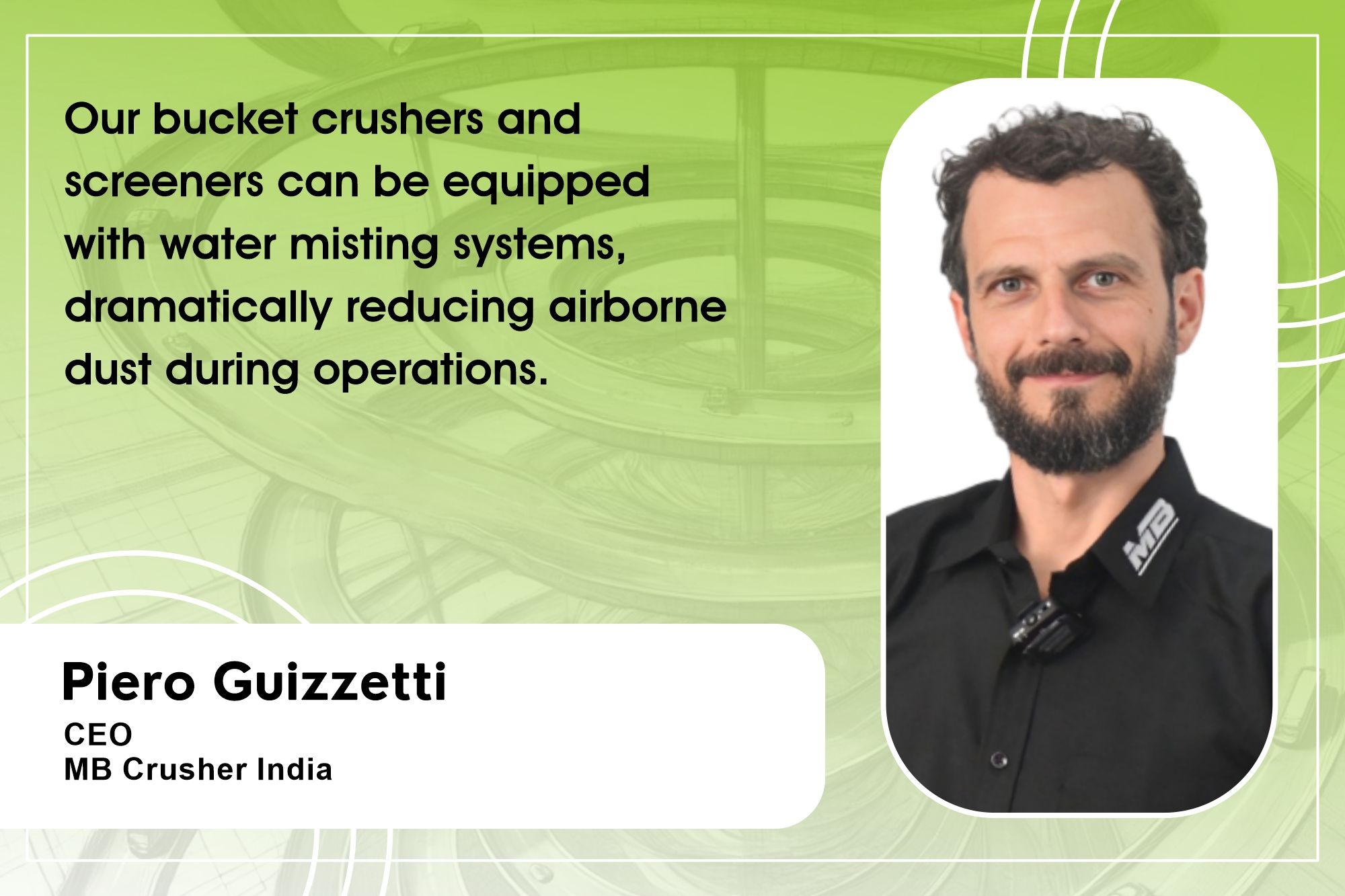Machines are becoming more intelligent and user-friendly
By Edit Team | May 8, 2021 6:07 pm SHARE

Modern machines extensively use ICT tools to inform the operator and the owner about machine operating parameters, says KA Sravan Kumar, Joint General Manager & Head- Product Support, L&T Construction & Mining Machinery.
What makes maintenance important in construction equipment?
The duty and duty cycle of earthmoving machines are subject to extreme conditions where the load on the components, oil and lubricants is very high. These off-highway machines work on unprepared terrain and must deal with the impact, abrasion, and high wear and tear on the ground engaging components. Most of the construction equipment these days use hydraulics as the power transmission medium for work equipment and hydraulic components have very tight clearances between moving parts.
As a result, consistent oil property, temperature and strict contamination control are imperative for machine performance and life. Timely oil and filter replacement, machine care and inspection of wear items is the only way to ensure that these rugged and expensive machines work and deliver their best for a long time. Proper maintenance, therefore, is the most important activity a machine owner and his O&M team must perform post equipment purchase.
What are the maintenance practices followed for the upkeep of construction equipment?
The basic rules of maintenance have not changed much in the last decade or so. It has become simpler as oil and filter change intervals have increased calling for smaller interventions. What has increased is the advancement in technology and ICT support that assists in prompting maintenance requirement. Maintenance involves essential care and daily monitoring of mechanical wear items, scheduled fixed interval replacements and periodic condition monitoring.
Essential care encompasses walk-around checks to identify leakages, breakages or cracks, noticing missing items, verifying oil and lubricant level, and greasing of pins and bushings. Monitoring the wear of tooth points and ground engaging tools, air filter cleaning and replacement fall under this category.
Fixed interval scheduled maintenance consists of oil and filters replacement and replacement of safety critical parts. Komatsu advanced hydraulic systems have extended the replacement period on Komatsu PC210-10M0 hydraulic excavator for hydraulic oil to 5,000 hours of operation and the hydraulic filter to 2,500 hours. Likewise, there are maintenance charts available for other items and one must replace them at the prescribed interval.
Komatsu promotes condition monitoring through the periodic Preventive Maintenance (PM) checks for hydraulics and engine system and KUC (Komatsu Undercarriage inspection) checks to evaluate the wear and remaining life of undercarriage components. PM checks help to evaluate the health of major components and systems to determine the overhauling interval. Similarly, Komatsu Oil and Wear Analysis (KOWA) helps peek into the hydraulics and understand the component condition by evaluating the trend of wear metal quantity in oil. The presence of excess metal will lead to the source from where they can come and hence ring the caution bell to prepare for component replacement.All the three elements of maintenance are equally important and when performed well will ensure the long service life of the high-value earthmoving and construction equipment.
How is predictive maintenance gaining importance in construction equipment and plants?
Care is always better than cure. It has been proved that the repair before failure is much cheaper and faster than repair after the failure of any component. The consequential damages or the side effects of failure on the machine hurt more than the failure itself. For example, if the hydraulic pump of an excavator fails, its debris will travel to the entire machine circuit before reaching the return line filter. It has the potential to damage control valves, cylinders, and motors. These particles remain trapped in the oil cooler for a long time and keep troubling in instalments. Thorough flushing of the hydraulic system is both time consuming and expensive, hence the mantra is not to allow major component failure on the machine.
Predictive maintenance through regular checks, recording of values and analysing them will help in gauging the deterioration of components and thus help in deciding the correct time to remove a component for overhaul. For engines, studying the trend of blow-by and engine oil pressure along with an oil analysis report can accurately throw light on the health of the engine and decide overhaul time without wasting useful hours.
While large fleet owners have separate teams for condition monitoring and predictive maintenance, the Product Support Department offers this expertise through the annual maintenance contracts to even single machine owners and they have benefited immensely through timely component overhauls and repair before failure. The predictive maintenance concept is on the rise as its benefits can easily be converted into savings and increased earnings.
L&T offers ready RECON components at its service centres to the users to replace the failed/affected component on an exchange basis, thereby reducing the breakdown time as little as possible.
What is the role of digital technology in plant/equipment operation and maintenance?
Modern machines extensively use ICT tools to inform the operator and the owner about machine operating parameters. Komatsu uses a telematics system called KOMTRAX (Komatsu Machine Tracking System) on their construction equipment that captures data from the sensors mounted on various components and sends it to their web care servers and the monitor panel. Machine owners can log in to the server and access details on machine operating hours, location, fuel consumption, caution and trouble data and maintenance schedules.
Apart from the regular caution, the self diagnostic monitor prompts the operator to stop the machine if the engine is idling for over five minutes, or if he has not selected the economy mode where power mode operation is not required, or if there is excessive relief operation and many more. The monitor panel prompts maintenance due to caution thirty hours before the scheduled activity, giving time to arrange oil and filters. The sensors capture trouble data and display it along with error code and description so that the maintenance team or service engineers can quickly resolve and put the machine back into action. Machines are becoming more intelligent and user-friendly with the usage of mechatronics and digital technology.
What is the importance of skill development in machine operation and maintenance? How will this help improve the machine uptime?
A large percentage of machine stoppages are avoidable if operation and maintenance are carried out properly. Therefore, skill development of operators and maintenance team should happen at the same pace as development in technology and equipment feature upgrade. Users should be made aware of the features of the machine and how to use them to enhance productivity and lower fuel consumption by choosing the right mode depending on the job site condition and production requirement. For example, the Komatsu PC210-10 M0 hydraulic excavator has six working modes that change from high production priority to high fuel economy priority as you move from P mode down to E4 mode. Thus, if an operator is not updated about the selection of the correct mode, the benefits of the feature and technology cannot be used, even though the owner has invested heavily in purchasing the latest technology.
Similarly, if the maintenance team does not keep pace with technology changes, the equipment downtime could be longer. In the last decade, a lot has changed in engine fuel and exhaust gas after-treatment where systems like high-pressure common rail, exhaust gas recirculation, selective catalytic reduction etc are adopted. As the entire approach to engine maintenance has changed, the skill level of the people who handle them ought to change. An error in the care and upkeep of these systems will be counter-productive to the machine and will also pinch the owner’s pocket.
L&T CMB lays adequate emphasis on skill development and has set up six training centres across the country to train customers’ operators and maintenance crew on the correct operation and upkeep methods for these modern machines. We have also accredited training partners of Infrastructure Equipment Skill Council (IESC) and have been the best OEM supporting skill development under the Skill India Mission since its inception continuously for the last five years. L&T CMB has created a pool of trained operators from unemployed youth who seek to make a career as machine operators. They are groomed to follow correct operating techniques that help to get the best from the machine.
What are the challenges faced in equipment maintenance? What are the measures needed for better maintenance practices?
Availability of a trained and skilled maintenance team, poor planning, and procrastination are some of the key challenges that hinder prompt and proper equipment maintenance. When machines work in remote job sites or are on hire, maintenance focus gets a bit diluted due to a lack of trained personnel. Maintenance of construction machines require oil, filters, and consumables and if adequate inventory is not available, delay creeps in. A lot of planning and back-end coordination is essential between project and parts, and service provider to ensure timely availability of spares necessary for maintenance. Sometimes with limited working hours, owners refrain from stocking parts and when the working hours are more, they don’t find time to stop the machine for maintenance. They defer it and the cycle continues with the result that machine care is neglected.
Equipment manufacturers offer machine care programmes to customers where a service engineer visits the site every 500 hours for scheduled service and assists in maintenance. Several other value-added services including an enhanced powertrain warranty are bundled. Komatsu offers this facility for their PC210-10 M0 and PC300/3508 machines for as high as 10,000 hrs of operation or four years from machine commissioning. During this period, the user is expected to pick up the nuances of proper machine upkeep and would have also reaped the benefits of timely maintenance. KOMTRAX also provides inputs on maintenance schedule and machine working conditions that help service engineers not miss anything important.
For older machines, customers can sign up with L&T CMB for annual maintenance contracts where service engineers inspect the machine and suggest ways and means to keep the machine optimally performing. Regular training emphasises the key areas and inspection items and each O&M team member must attend training and remain updated. This certainly impacts machine uptime and performance.
L&T CMB, with their cumulative learning of 75 years in this industry, understands what is necessary for an O&M team. Accordingly, we release a customer training calendar each year and cover all aspects of machine operation and maintenance. For operators, programmes are conducted at job sites so that trainers can focus on on-site specific techniques. Programmes deal with structure and function, emphasise maintenance procedures, contamination control and usage of the ICT features. Testing, adjustment and troubleshooting programmes are attended by the field team who have spent considerable time with the machine and are comfortable with hydraulic systems.
Cookie Consent
We use cookies to personalize your experience. By continuing to visit this website you agree to our Terms & Conditions, Privacy Policy and Cookie Policy.



































-20240213125207.png)

























